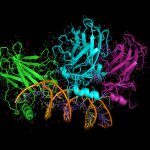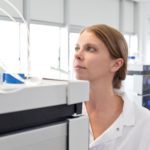Link to Pubmed [PMID] – 36737754
Link to HAL – pasteur-04099048
Link to DOI – 10.1186/s12915-022-01506-w
BMC Biol 2023 Feb; 21(1): 21
In a range of human disorders such as multiple myeloma (MM), immunoglobulin light chains (IgLCs) can be produced at very high concentrations. This can lead to pathological aggregation and deposition of IgLCs in different tissues, which in turn leads to severe and potentially fatal organ damage. However, IgLCs can also be highly soluble and non-toxic. It is generally thought that the cause for this differential solubility behaviour is solely found within the IgLC amino acid sequences, and a variety of individual sequence-related biophysical properties (e.g. thermal stability, dimerisation) have been proposed in different studies as major determinants of the aggregation in vivo. Here, we investigate biophysical properties underlying IgLC amyloidogenicity.We introduce a novel and systematic workflow, Thermodynamic and Aggregation Fingerprinting (ThAgg-Fip), for detailed biophysical characterisation, and apply it to nine different MM patient-derived IgLCs. Our set of pathogenic IgLCs spans the entire range of values in those parameters previously proposed to define in vivo amyloidogenicity; however, none actually forms amyloid in patients. Even more surprisingly, we were able to show that all our IgLCs are able to form amyloid fibrils readily in vitro under the influence of proteolytic cleavage by co-purified cathepsins.We show that (I) in vivo aggregation behaviour is unlikely to be mechanistically linked to any single biophysical or biochemical parameter and (II) amyloidogenic potential is widespread in IgLC sequences and is not confined to those sequences that form amyloid fibrils in patients. Our findings suggest that protein sequence, environmental conditions and presence and action of proteases all determine the ability of light chains to form amyloid fibrils in patients.


